Canton POS

Scrimmage: Football in American Art from the Civil War to the Present (August 1, 2017 - October 29, 2017)
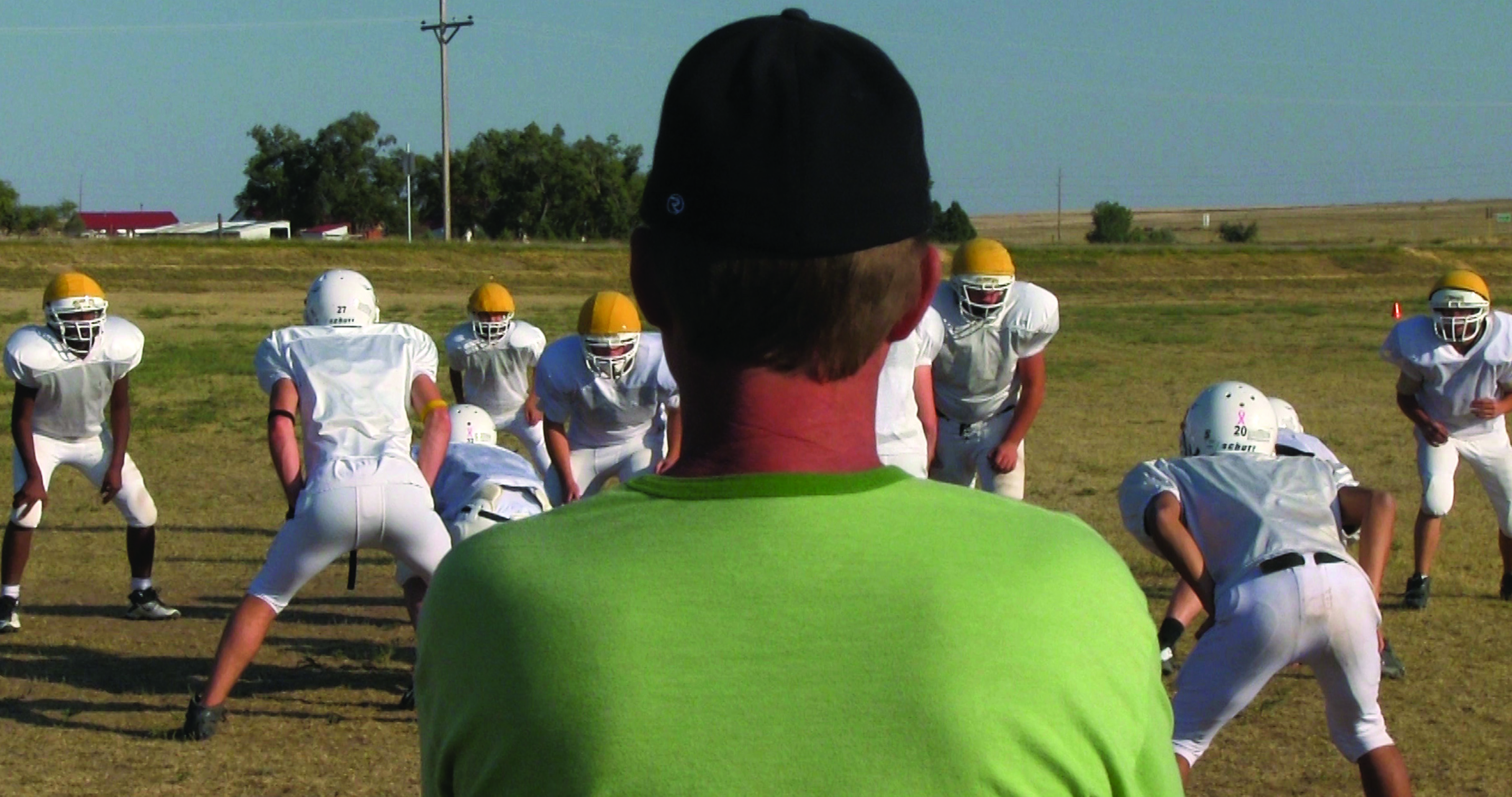

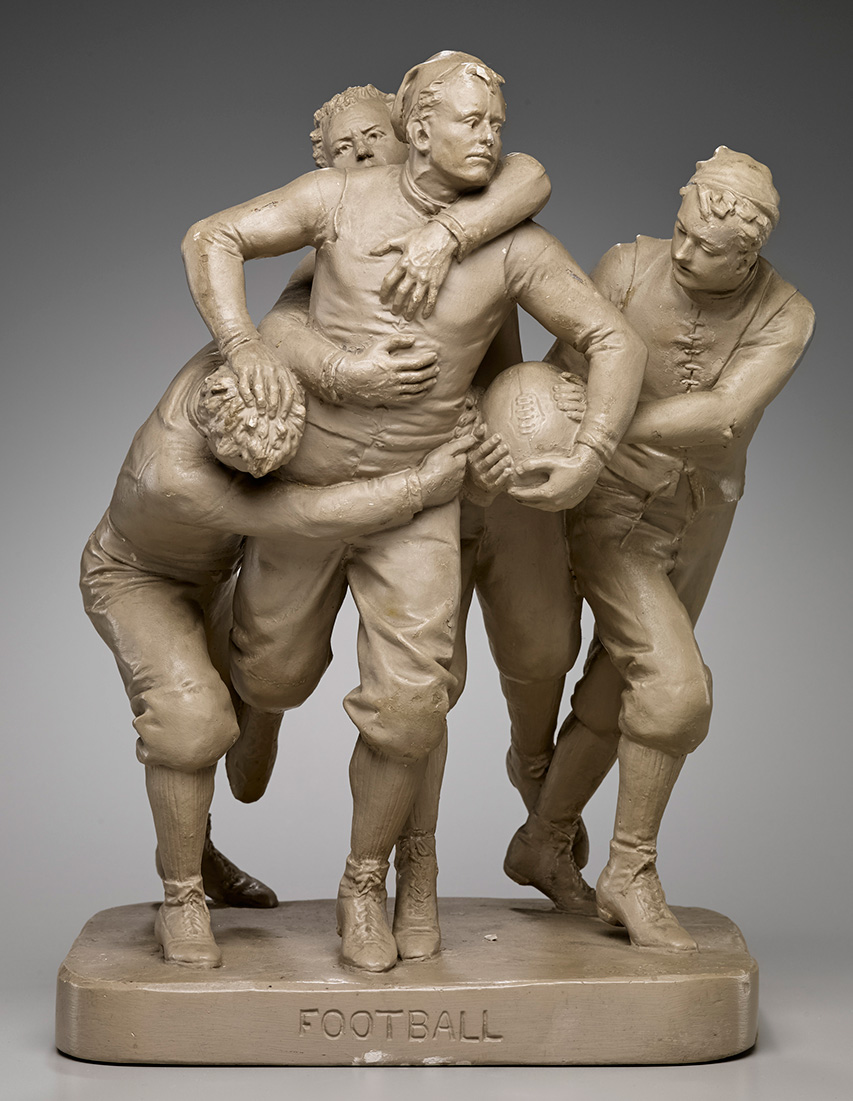 Scrimmage: Football in American Art from the Civil War to the Presentis the first comprehensive assembly of work by prominent American artists focusing on football. This exciting new exhibition is on view August 1 – October 29, 2017 with a special public reception on August 10 from 6:00 p.m. to 8:00 p.m. Scrimmage will allow audiences from around the country to discover and explore football and art in a community steeped in both. This special exhibition is organized by the Gregory Allicar Museum of Art (formerly the University Art Museum) at Colorado State University, and the Jordan Schnitzer Museum of Art at the University of Oregon.
Scrimmage: Football in American Art from the Civil War to the Presentis the first comprehensive assembly of work by prominent American artists focusing on football. This exciting new exhibition is on view August 1 – October 29, 2017 with a special public reception on August 10 from 6:00 p.m. to 8:00 p.m. Scrimmage will allow audiences from around the country to discover and explore football and art in a community steeped in both. This special exhibition is organized by the Gregory Allicar Museum of Art (formerly the University Art Museum) at Colorado State University, and the Jordan Schnitzer Museum of Art at the University of Oregon.
Through works assembled from the Smithsonian American Art Museum, the National Portrait Gallery, the Figge Art Museum, Denver Art Museum, The Rockwell Museum, The Museum of Fine Arts - Houston, Yale University, Canton Museum of Art, and numerous other public and private collections, including paintings, prints, sculptures, and new media, Scrimmage details the history of football from the end of the Civil War to the present, exploring themes such as race, teamwork, and competition for viewers to examine today. Scrimmage features 60 works from American artists including: Winslow Homer, Holiday in Camp, 1865; R. Tait McKenzie, The Onslaught, 1920; Thomas Hart Benton, Forward Pass, 1972; Andy Warhol, O.J. Simpson, 1977; and Ernie Barnes, Fumble in the Line, 1990.
Scrimmage Programming:
Along with the exhibit, several collaborative events are planned to bring Scrimmage to life over three months throughout the Canton community:
July 23 - August 7 // Pro Football Hall of Fame Enshrinement Festival
Special Scrimmage Exhibit Tours for Enshrinement Weekend
For a full listing of events, visit www.profootballhoffestival.com
August 4, 4:30pm // Art Mural Dedication - No. 5 in "The ELEVEN" Public Art Project
Super Bowl III, 1968 by Dirk Rozich
Dedication by David Baker, President, Pro Football Hall of Fame, Robb Hankins, CEO of Arts In Stark, and Special Guests celebrating one of the "Eleven Greatest Moments in Football"
Cultural Center for the Arts / Canton Museum of Art (1001 Market Avenue North)
August 10, 6-8pm (Free) // Scrimmage Opening Reception - Canton Museum of Art
Special Reception & Exhibit Tours
Gallery Talk: "Football in the Art Museum" - Max Barton, Executive Director, Canton Museum of Art and Joe Horrigan, Executive Director, Pro Football Hall of Fame
August 10 - October 29 // Gridiron Legends of Stark County - Canton Museum of Art
Special exhibit from the Pro Football Hall of Fame focused on Canton's enshrinees
August - October // Paul Brown Exhibit - Massillon Museum
Paul Brown: Innovator - New exhibit celebrating Paul Brown as coach and NFL visionary
Exhibit opening August 19 (Free) / www.massillonmuseum.org
September 3, 7:30pm (Free) // Tailgate in the Park - Canton Symphony Orchestra
Summer Serenades - Symphony Tailgate in the Park
Petros Lake Park (3519 Perry Drive SW, Canton)
Visit www.cantonsymphony.org/summerserenades for more details
September 8 & 9, 7:30pm ($5 Admission) // Canton Palace Theatre
Football Movie Weekend - Sept. 8, "Rudy" / Sept. 9, "Remember the Titans"
Doors open at 7pm / www.cantonpalacetheatre.org
September 9, 11am - 3pm (Free) Scrimmage Family Field Day - Canton Museum of Art
Presented by AultCare
Free family fun with art activities, sports challenges, scavenger hunts in the galleries and more!
September 13 & 20, 6pm (Free) // Sports Art Talk
"Race and Football: Evolution of the Game"
Reveals the history of African American athletes both on the field and in sports imagery. Presented by Dr. Leslie Heaphy, Associate Professor of History, Kent State University at Stark
September 13 - Canton Museum of Art - Cable Hall
September 20 - Kent State University at Stark - Main Hall Auditorium
October 4, 6pm (Free) // Sports Art Talk
"Gladiators: The Concussion Crisis and Football's Future Through the Visual Arts"
Artists and illustrators have used football in their artwork to bring attention to many issues, such as the safety of the game. This fascinating topic will be examined by Dr. Michael Oriard, distinguished professor at Oregon State University, author of four cultural studies on football, including "The Art of Football" , and former player with the Kansas City Chiefs. Exhibit tours and book signing (books available to purchase).
Seating is Limited - Registration Required: http://bit.ly/2hyzEDU
Canton Museum of Art - Cable Hall
Pro Football Hall of Fame Scrimmage Speaker Series
The Pro Football Hall of Fame will celebrate excellence of the game in what it gives back to our communities and how it builds teamwork and character in all. Speakers include David Baker, President, and Joe Horrigan, Executive Director, of the Pro Football Hall of Fame, as well as a Hall of Famer joining them at each event.
Sept. 5 — Celebrating Excellence & Character in Our Communities
Oct. 4 - Celebrating Excellence with our Schools - with Gold Jacket Anthony Munoz // 12pm // Free. Limited Seating. Advance Registration Required HERE
Pro Football Hall of Fame
August - October // Stark District Library One Book, One Community
The library will be working with the Museum to present programs based on the book "Rudy: My Story," which was chosen for the Library's One Book, One Community feature. More information on programs surrounding One Book, One Community can be found on the library website www.starklibrary.org
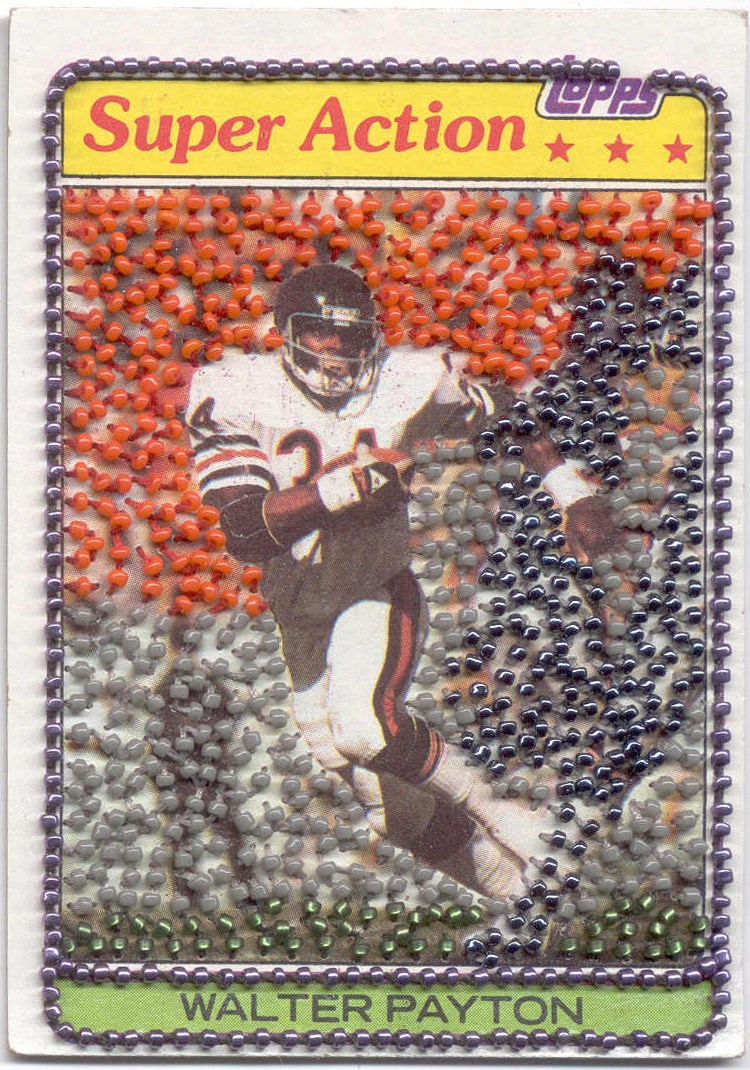 Scrimmage Origins
Scrimmage Origins
This exhibition developed as curators discovered that a host of prominent American artists had pictured aspects of football and the public culture surrounding the sport, yet no focused art historical study had examined these images; in fact, very little research has addressed the large body of artworks that engage with sports.
The exhibition is not meant to present a history of football – the development of rules and gradual changes in play, the history of teams or players – but instead offers a window to understanding themes central to American life, both past and current. As such, the exhibition explores these images from multiple perspectives and themes. The Canton Museum of Art invites visitors to engage in a dialogue – with works of important American artists as a springboard – about sports, art, and their roles in our history and culture, and to reflect on how these images reveal attitudes and transitions in American life. The exhibition is divided into eight sections:
Football: the Spectator Sport
How did football, which began as a private extracurricular activity for a small group of young men, become the public spectacle we know today? Early on the sport was embraced by college administrators who saw benefits, including the potential for financial gain – contributions from alumni and institutional giving loyalty – and increased interest from the press. This exhibition examines the public culture of football as spectator sport. Football soon developed a culture separate from play on the field – bands, cheerleaders, mascots, team colors, pep-rallies, homecoming, and parades – were all introduced early in the history of the sport. These remain vital parts of the culture and have led to modern-day fan-driven activities like tail-gating, team merchandising, and extensive half-time extravaganzas brought to super-size scale at the Super Bowl. Artists, as fascinated by these phenomena as the game itself, picture these American obsessions.
Class, Race and Ethnicity
Initially isolated to the campuses of the Ivy Leagues, football began as a sport for upper-class white Americans. The exhibition examines issues of class, race, and ethnicity and football’s transition from an Ivy League sport to a mass-cultural, multi-ethnic, and multi-racial phenomenon. How did this transition happen? Early and frequent press coverage brought football to a mass audience, broadening interest in the sport; at the turn of the century American immigrants began to engage in casual games as a means of assimilation into American life; and, as the American education system democratized, welcoming a wider-spectrum of students to campuses across the country, college football rosters began to reflect a more diverse population. Despite this, the imagery of football reflects ongoing racial and ethnic prejudice and biases. While African American and Native American players distinguished themselves on the football gridiron, their images are rarely seen in the early history of football art; instead they are reduced to racial stereotypes, or parodied in mascot imagery.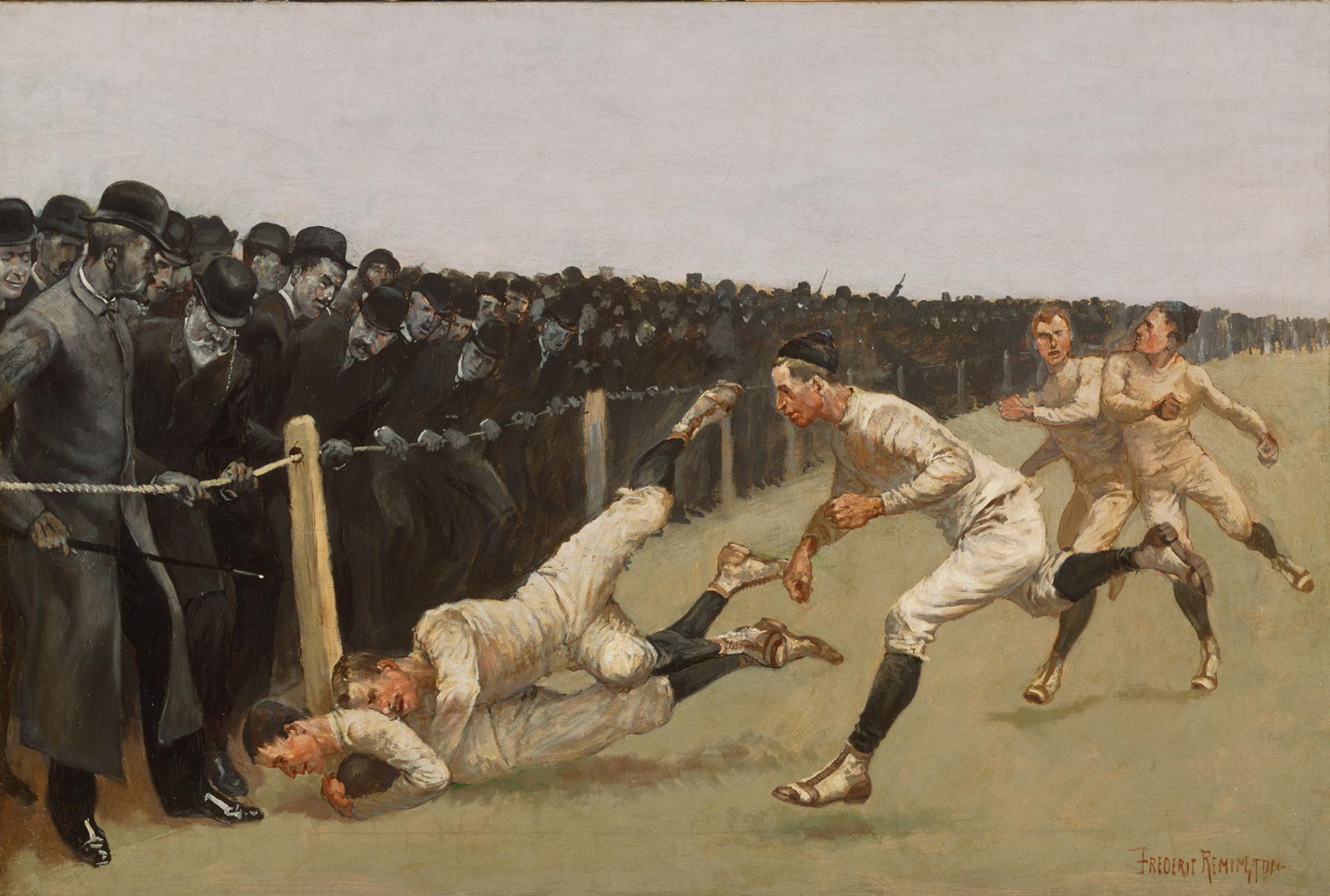
Football, Struggle, War and the “Strenuous Life”
President Theodore Roosevelt coined the term “strenuous life,” urging American men and boys to develop strength through athletics in preparation for “the rough work of the world.” In a 1900 article entitled “The American Boy” Roosevelt singled out football as a model. He admonished the American boy to engage in “manly exercises and to develop his body” and concluded by writing: “In short, in life, as in a foot-ball game, the principle to follow is: Hit the line hard; don’t foul and don’t shirk, but hit the line hard!” For Roosevelt, the “strenuous life” was also preparation for the necessity of war and keeping America strong. This exhibit examines artists’ depictions that relate to the promotion of football as a model for masculinity and that suggest analogies to warfare.
Gender in Football: Women’s Roles
Despite Title IX legislation and attempts at developing women’s football leagues, women have not played a role on the gridiron. Yet women figure prominently in football imagery. The exhibition explores how images both perpetuate and challenge gender stereotypes. While Charles Dana Gibson’s The Coming Game: Yale vs. Vassar, 1895, places women as protagonists on the field, the majority of artists portray women in passive and objectified roles. As adorned spectators, cheerleaders, drum majorettes, women serve as foils that clearly define play on the field as a masculine realm.
Football and Violence
Current discussions about long-term football injuries and the concussion crisis suggest that these concerns are new. Yet, as early as the colonial period, rudimentary forms of football were outlawed and condemned for their violent nature and for provoking incendiary behavior. And, in the early part of the 20th century, despite his love for football, Theodore Roosevelt bemoaned the lawless nature of the game. The troublesome nature of football, explored by artists from the 19th century through the contemporary period, emerged first in a score of illustrations. In Scrimmage artists picture the extreme physical nature of the sport and its ramifications.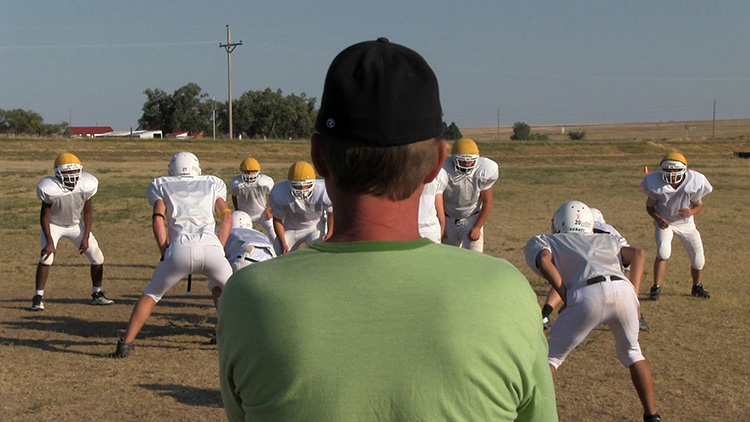
The American Sport
Yale Coach, Walter Camp (1859-1925), widely known as the “father of American football,” envisioned a game that mirrored a model of capitalism, industrial strength, and American ingenuity. Creating rules that clearly distinguished football from what he saw as its unruly English antecedents, Camp’s football imitated an American corporate structure with each player fulfilling a specific assignment, a hierarchy of positions, and managerial roles for quarterback and coaching staff. In the exhibition, artwork reflects these ideas and other traditions specific to American ways of life, including the association of the Thanksgiving holiday with football, the quarterback as American hero, and the sport as a rite-of-passage.
Celebrity Culture and the Media
The rise of football as an American sport is directly tied to media coverage. In Scrimmage, a number of prints are displayed that were published and widely distributed through a popular press that brought the sport to wide attention. Michael Oriard’s books, Reading Football, and King Football, trace the arc of media coverage from these early prints, through the rise of radio, newsreels, and movies, to the advent of the televised game, chronicling how our mediated world has promoted the sport and its participants. The first televised game took place on December 28, 1958 and gradually, television coverage accentuated spectacle; the use of slow motion, instant replay, half-time interviews and locker room footage, turned the football contest into high drama, and heightened attention to the celebrity status of individual players. Television also transformed the way that football was seen – allowing fans to follow teams from the comfort of their own homes. In this section we examine artists reacting to celebrity culture and to mediated views of football.
Athleticism
The concept of “muscular Christianity” promoted in the late 19th and early 20th century suggested that vigorous exercise and participation in sports competition, developed positive moral characteristics. Popularized, in great part, because of fears that an urbanized workforce lacked physical fitness, the movement promoted strenuous activity. Football was often a model. Though not always aligned to the movement of “muscular Christianity” American leadership has repeatedly emphasized the need for physical fitness, athletic achievement, teamwork and sportsmanship. Presidents Theodore Roosevelt, Woodrow Wilson, Dwight Eisenhower, and John F. Kennedy all stressed the need for improved physical condition; Eisenhower established the President’s Council on Youth Fitness in 1956 and Kennedy urged better physical fitness in light of Cold War competition with a fit Soviet populace. Today, Michelle Obama promotes “Let’s Move” as a means towards a healthier, less sedentary life. In this section we examine artists who celebrate the athletic prowess of athletes and the skill and beauty of athletics.












